If you love seeing butterflies fluttering and bees buzzing in your garden, planting native pollinator-friendly plants is one of the best ways to invite them in. Native plants are perfectly suited to your local environment, providing essential nectar and pollen for the pollinators that depend on them. Not only do these plants help support struggling bee and butterfly populations, but they also fill your garden with natural beauty and seasonal color. Here are 10 gorgeous native pollinator plants that will turn your backyard into a haven for beneficial insects.
1. Purple Coneflower (Echinacea purpurea)
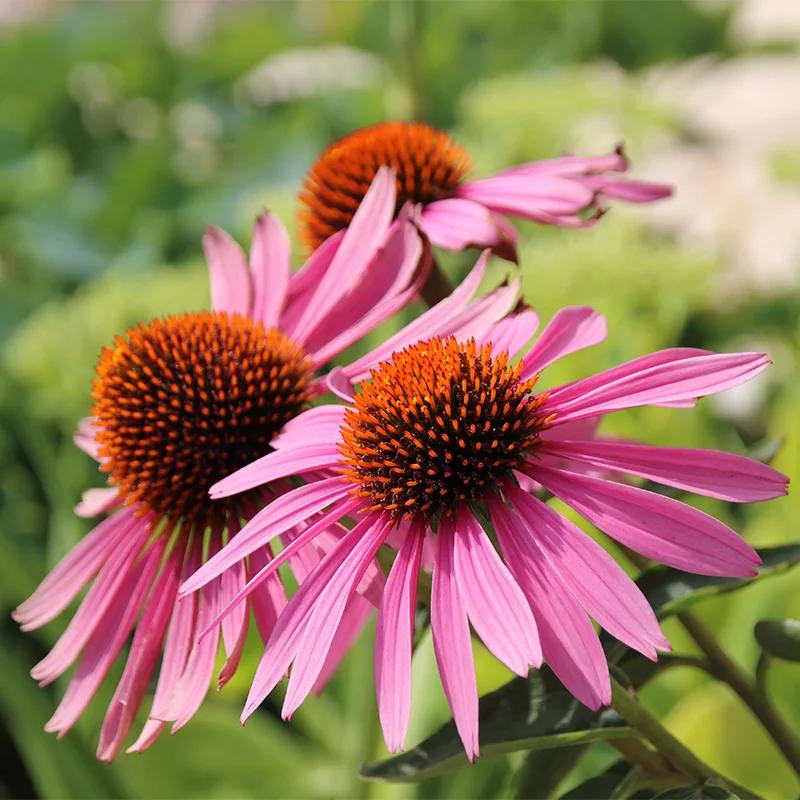
The Purple Coneflower is a beloved native perennial that attracts a steady stream of bees, butterflies, and even songbirds. Its large, daisy-like purple blooms with raised orange centers appear from early summer to fall, offering reliable nectar throughout the season. Tough and drought-tolerant, this plant thrives in full sun and well-drained soil. Not only is it stunning in flower beds and meadows, but it also has herbal uses and provides seeds for birds in autumn, making it a pollinator and wildlife superstar.
2. Butterfly Weed (Asclepias tuberosa)
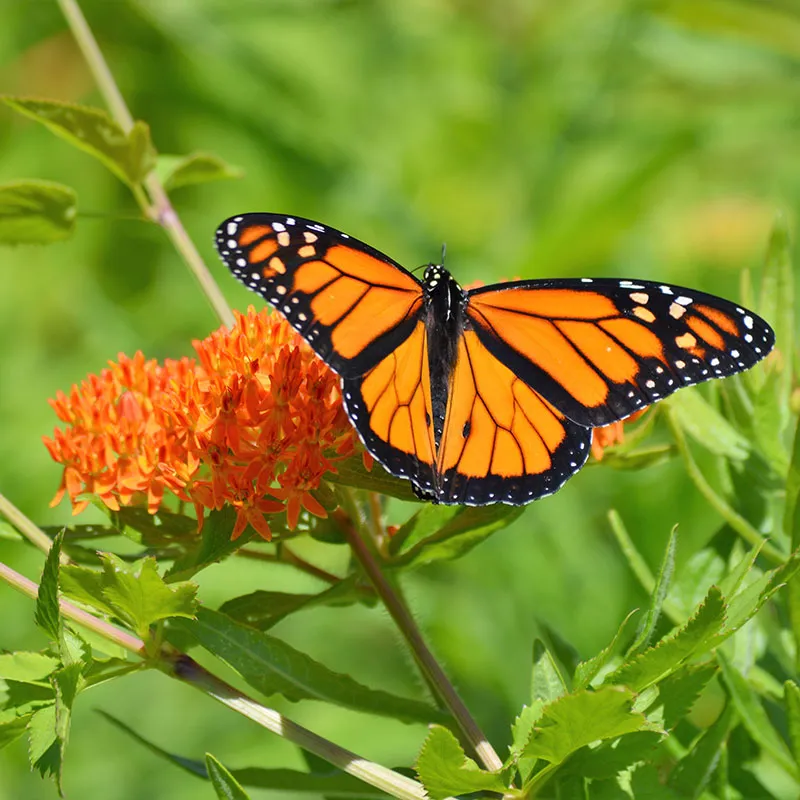
True to its name, Butterfly Weed is a magnet for butterflies especially Monarchs, as it serves as a host plant for their caterpillars. Its clusters of vibrant orange flowers bloom in mid to late summer, providing a crucial nectar source for butterflies, bees, and other beneficial insects. Native to prairies and open woods, this hardy perennial thrives in full sun and poor, well-drained soils. Its bright color and pollinator-friendly nature make it a must-have in wildflower gardens, borders, and pollinator patches.
3. Black-Eyed Susan (Rudbeckia hirta)
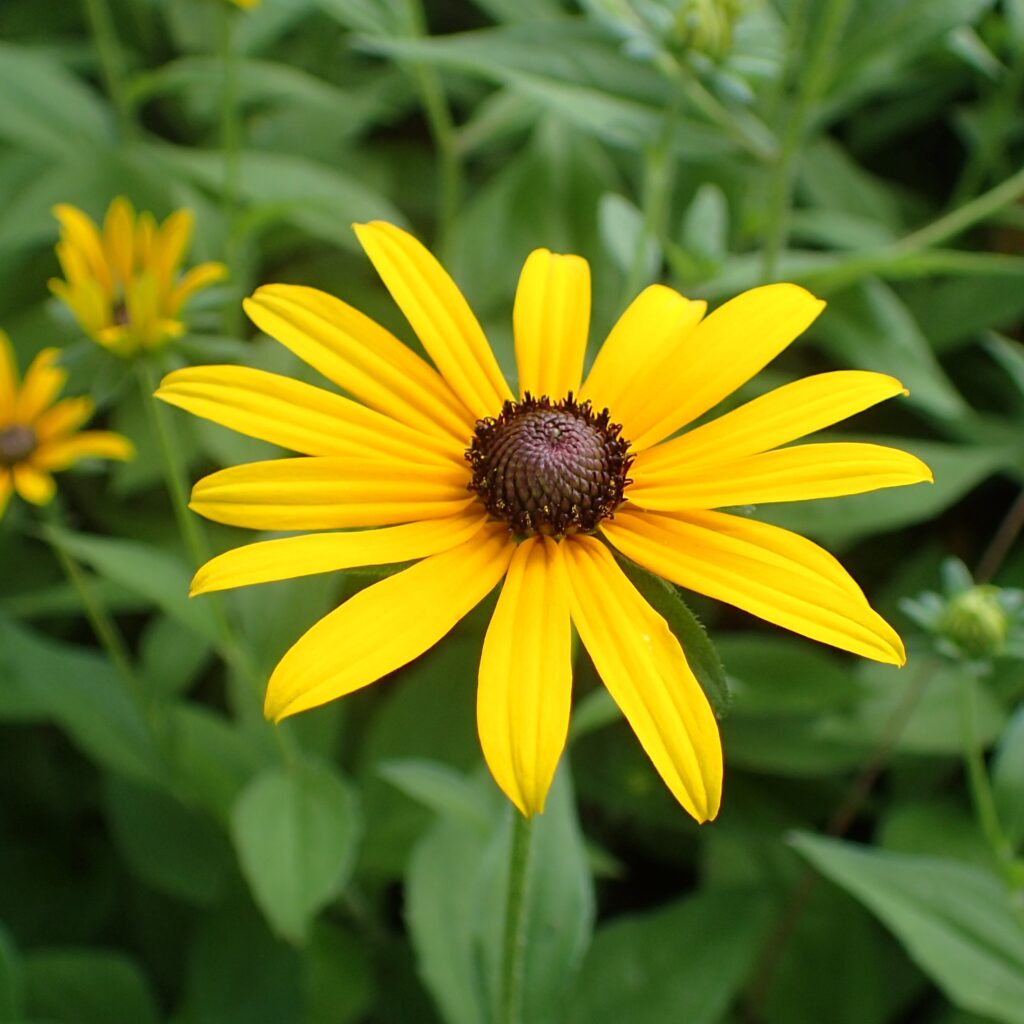
Black-Eyed Susan is a cheerful native wildflower that brightens up any garden space with its golden-yellow petals and dark, central cones. Blooming from midsummer to early fall, it offers a generous nectar source for bees, butterflies, and beetles. This easy-to-grow perennial thrives in full sun and tolerates a variety of soil types, making it perfect for both flower beds and naturalized meadows. Its long-lasting blooms also work beautifully in fresh-cut bouquets, while the seeds feed birds in late fall.
4. Bee Balm (Monarda fistulosa)
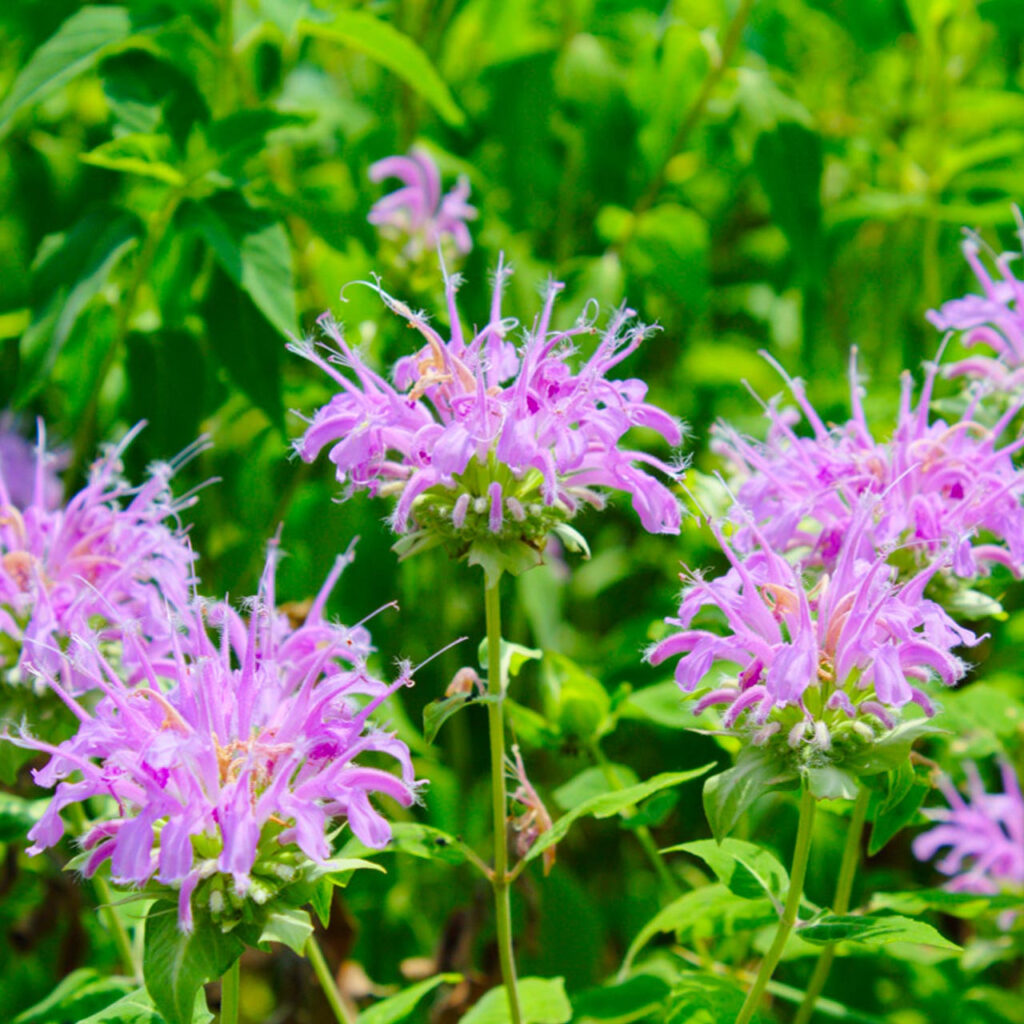
With its shaggy, lavender-pink flowers and minty fragrance, Bee Balm is an irresistible favorite for pollinators. Native bees, honeybees, hummingbirds, and butterflies flock to its nectar-rich blooms from midsummer to early fall. A member of the mint family, it thrives in full sun to partial shade with moist, well-drained soil. Bee Balm spreads easily, making it ideal for pollinator patches, cottage gardens, and prairie-style plantings. Bonus: its aromatic leaves can also be used to brew herbal teas.
5. Joe-Pye Weed (Eutrochium purpureum)
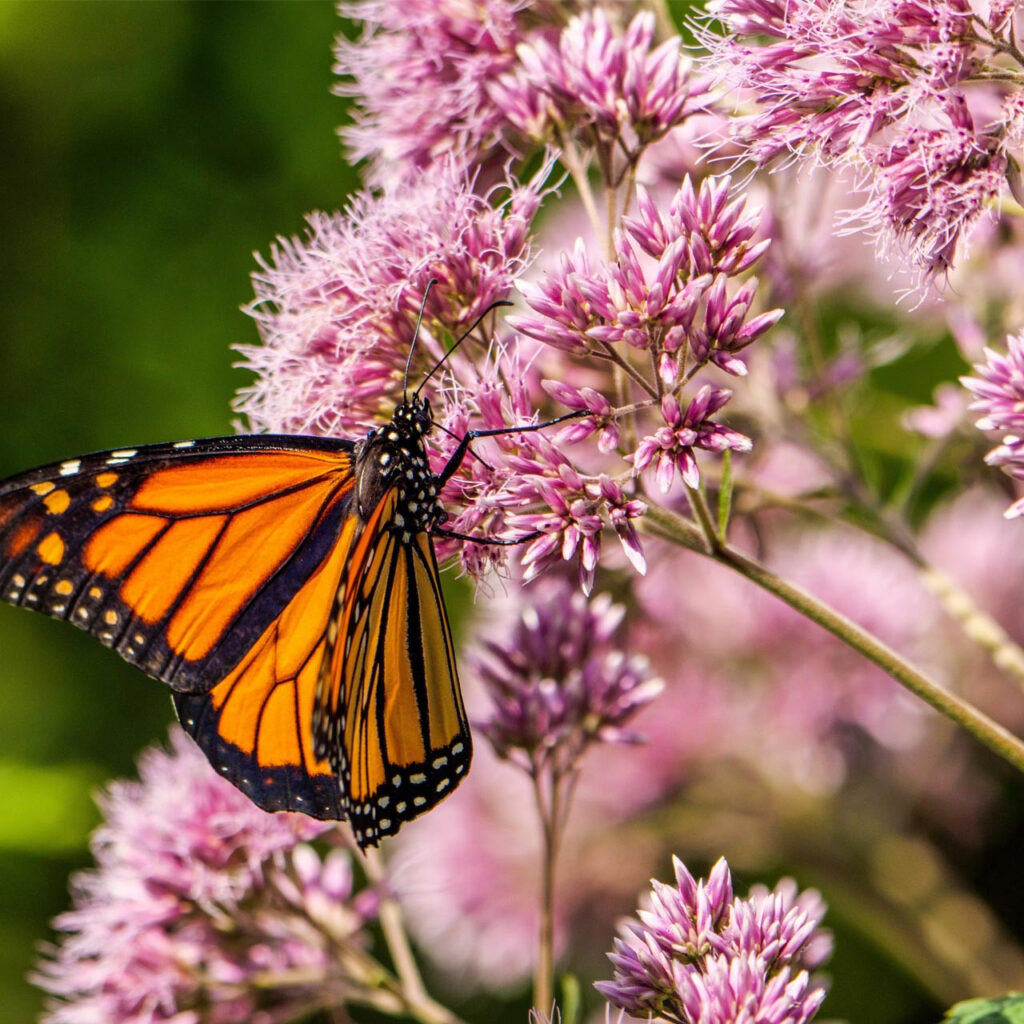
For a tall, show-stopping addition to your pollinator garden, look no further than Joe-Pye Weed. This native perennial produces large, dome-shaped clusters of pale pink to purple flowers in late summer, attracting swarms of butterflies, especially swallowtails. Standing up to 6 feet tall, it’s perfect for the back of borders or naturalized meadow areas. It prefers moist, rich soils in full sun to partial shade. Not only does it lure pollinators, but it also adds dramatic vertical interest to your landscape.
6. New England Aster (Symphyotrichum novae-angliae)

New England Aster is a late-season bloomer that provides vital nectar for pollinators as other flowers begin to fade. Its vivid purple, pink, or lavender daisy-like flowers appear in early fall, attracting bees, Monarch butterflies, and other late-migrating insects. This hardy perennial grows well in sunny, open areas and thrives in moist to average soils. Pair it with goldenrods and other fall bloomers for a lively, colorful display that keeps your pollinator garden buzzing well into autumn.
7. Goldenrod (Solidago spp.)
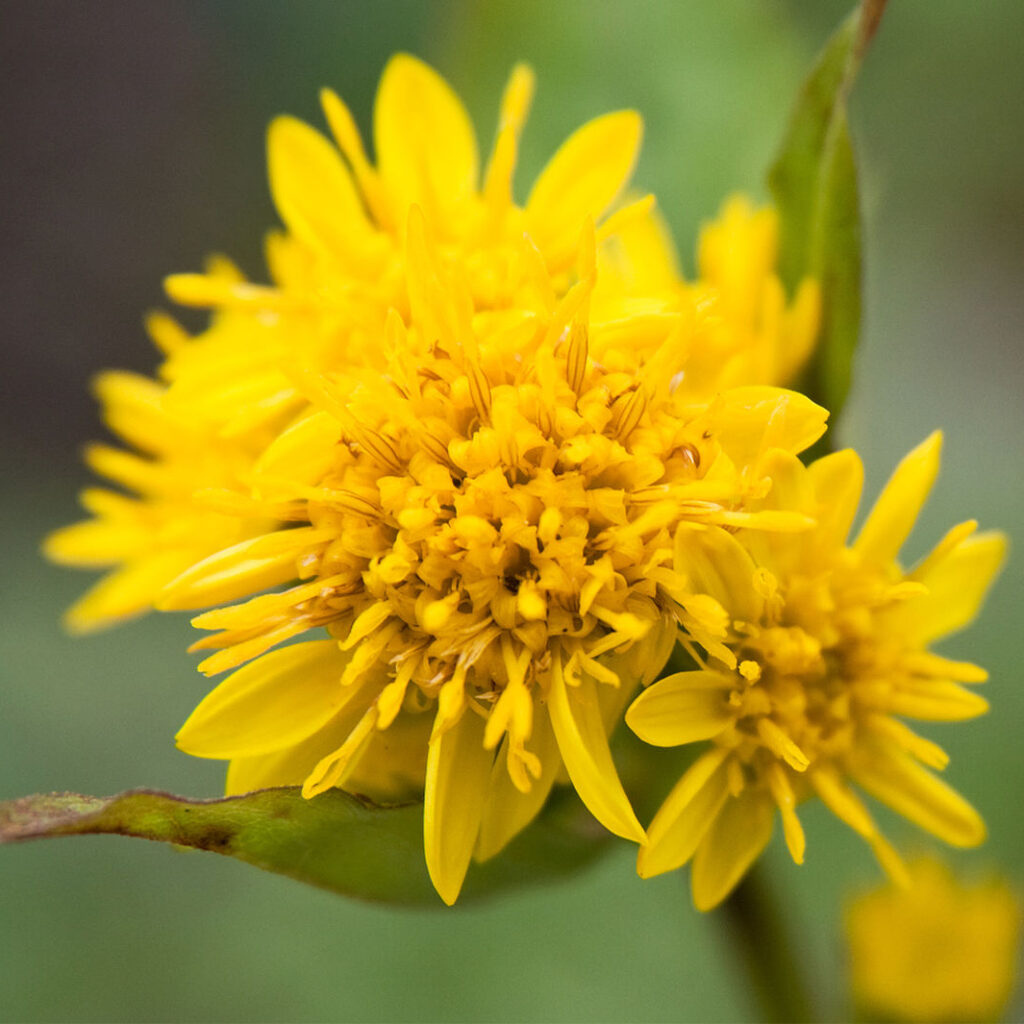
Goldenrod is often misunderstood but is actually one of the best native plants for pollinators. Its bright yellow flower spikes bloom from late summer into fall, offering a rich source of nectar for bees, butterflies, and other beneficial insects. Goldenrod thrives in full sun and adapts to a range of soil types. It’s a vital food source for migrating Monarchs and helps support late-season pollinators when few other plants are blooming. Plus, it pairs beautifully with asters and native grasses.
8. Wild Bergamot (Monarda fistulosa)

Wild Bergamot, another member of the mint family, produces striking clusters of pale lavender flowers from mid to late summer. This native perennial is a favorite among native bees, honeybees, hummingbirds, and butterflies, all of which flock to its nectar-rich blooms. It thrives in sunny meadows and open woodlands, preferring well-drained soil. Like its cousin Bee Balm, Wild Bergamot has aromatic leaves that can be used for tea. It adds a soft, airy texture to wildflower plantings and pollinator patches.
9. Blazing Star (Liatris spicata)
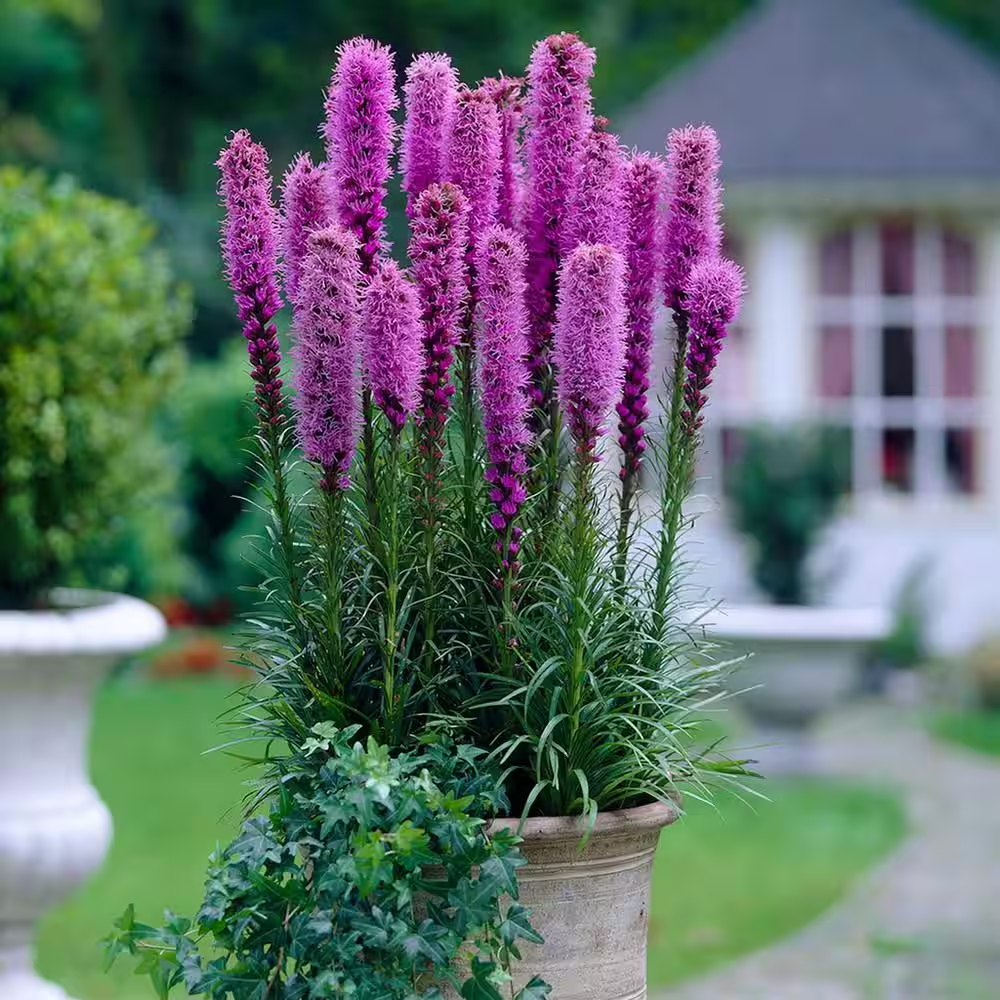
Known for its tall, spiky blooms of vibrant purple, Blazing Star is a butterfly favorite that adds vertical drama to pollinator gardens. Its nectar-rich flowers bloom sequentially from top to bottom in mid to late summer, attracting Monarchs, swallowtails, bees, and hummingbirds. Native to prairies and open woodlands, Blazing Star prefers full sun and well-drained soils. Its grassy, slender foliage complements other native wildflowers beautifully and provides winter interest with its upright seed heads.
10. Columbine (Aquilegia canadensis)

Columbine is a delicate, nodding wildflower that signals the arrival of spring in woodland and shade gardens. Its bright red and yellow blooms are particularly attractive to hummingbirds and early-emerging pollinators like native bumblebees. Native to North America, it thrives in partial shade with well-drained soil and naturalizes easily in wildflower plantings. Its unique flower shape adds charm and whimsy to any pollinator garden while providing an early nectar source when other plants have yet to bloom.


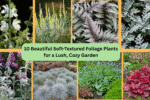
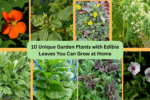

Leave A Comment